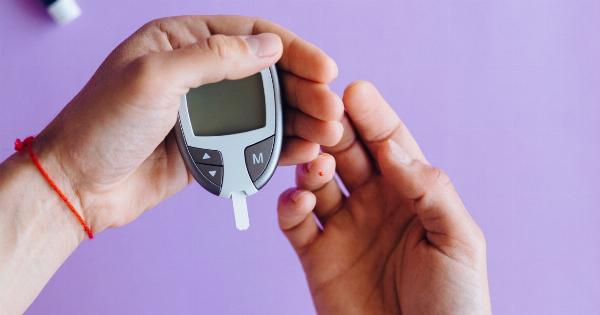Diabetes is a chronic condition affecting millions of people worldwide. It is characterized by high blood sugar levels and is often managed through medication, lifestyle changes, and monitoring blood glucose levels.
However, researchers have recently developed a new endoscopy technique that may offer an innovative approach to diabetes control without the need for sugar intake. This groundbreaking technique has the potential to revolutionize the way diabetes is managed, providing better quality of life for patients. In this article, we explore the new endoscopy technique and its implications for diabetes control.
What is Diabetes and its Current Management?
Diabetes is a metabolic disorder that occurs when the body either doesn’t produce enough insulin or can’t effectively use the insulin it produces.
Insulin is a hormone that regulates blood sugar, allowing it to enter the cells for energy production. Without sufficient insulin or proper utilization, glucose builds up in the bloodstream, leading to persistently high blood sugar levels.
Currently, diabetes management primarily focuses on maintaining blood sugar levels within a target range.
This involves regular blood glucose monitoring, medication (such as insulin injections or oral drugs), dietary modifications, and physical activity. A key aspect of managing diabetes is controlling sugar intake, as consuming too much sugar can cause blood sugar levels to spike and contribute to long-term complications.
The Limitations of Current Diabetes Control Methods
While current management techniques for diabetes have been effective to some extent, they do have limitations. One prominent limitation is the reliance on sugar intake as a means of adjusting blood sugar levels.
This approach places a significant burden on individuals living with diabetes, as they must constantly monitor and restrict their sugar consumption.
Additionally, this conventional approach does not address the root cause of diabetes, focusing mainly on symptom management rather than a cure.
Moreover, some patients may experience adverse side effects from medication, leading to further complications.
The Promise of the New Endoscopy Technique
A breakthrough in diabetes control has come in the form of a new endoscopy technique that can potentially eliminate the need for sugar intake in diabetes management.
This innovative technique involves the use of minimally invasive procedures to target specific areas of the digestive system responsible for glucose absorption.
The endoscopy technique works by inserting a specialized tube with a miniature camera into the patient’s digestive tract. This allows healthcare professionals to visualize the small intestine and identify the regions involved in glucose uptake.
Once identified, these specific areas can be targeted using various methods, such as laser therapy, to reduce or eliminate their glucose absorption capacity.
By selectively disrupting glucose absorption without affecting the overall digestive process, this technique holds great promise for those living with diabetes.
Patients may no longer need to strictly monitor their sugar intake or worry about spiking blood sugar levels, leading to improved freedom and enhanced quality of life.
Potential Benefits and Advancements
The new endoscopy technique for diabetes control without sugar intake offers several exciting benefits and advancements in the field of diabetes management:.
1. Reduced Dependency on Medication:
With the successful implementation of this technique, some individuals with diabetes may be able to significantly reduce or even eliminate their reliance on medication.
2. Easier Blood Sugar Control:
This technique may provide greater ease in achieving optimal blood sugar control as glucose absorption can be more precisely regulated, allowing for improved overall management of the condition.
3. Fewer Dietary Restrictions:
Patients can enjoy greater dietary freedom as their sugar intake restrictions may be lifted. This could lead to a more enjoyable eating experience, reduced stress, and enhanced psychological well-being.
4. Enhanced Long-term Health Outcomes:
By targeting the root cause of diabetes and offering more effective management, this technique has the potential to reduce the risk of long-term complications associated with persistent high blood sugar levels.
5. Improved Quality of Life:
Living with diabetes can be challenging, but this new endoscopy technique could significantly improve the quality of life for those affected. The freedom from constant sugar monitoring and intake restriction can lead to reduced stress and anxiety.
Future Implications and Conclusion
The development of this new endoscopy technique represents a major breakthrough in diabetes management.
However, it is important to note that this technique is still in the experimental phase and requires further research and trials to assess its long-term effectiveness, safety, and feasibility.
If successfully refined and adopted on a wider scale, this technique has the potential to transform the lives of millions of people living with diabetes.
It offers a path towards improved diabetes control without the need for strict sugar intake monitoring, providing individuals with greater freedom and enhanced overall well-being.





























